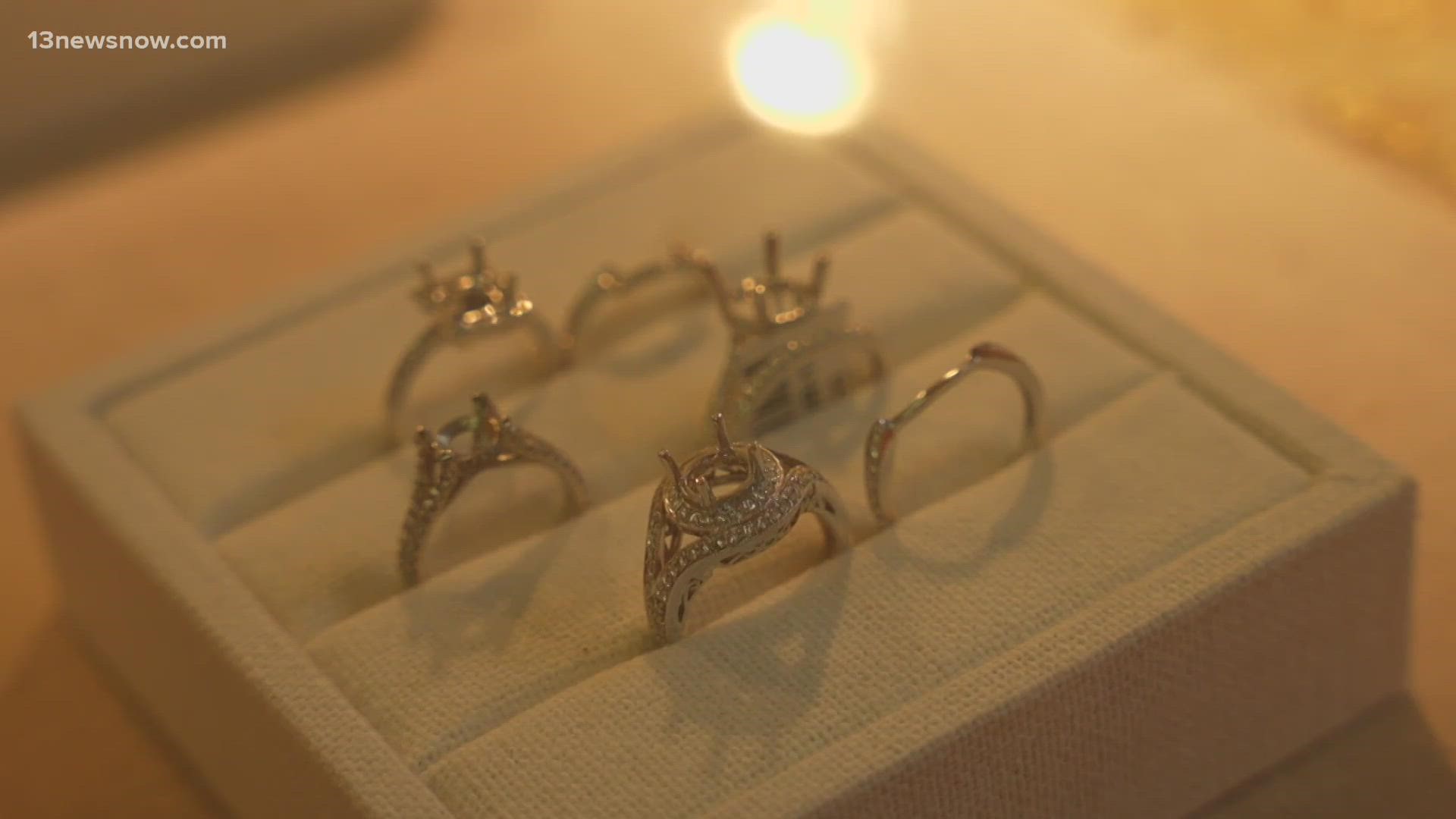NORFOLK, Va. — Brilliant, sparkly, and blingy are just some words used to describe diamonds. When you're trying to pick the right gem for your loved one or yourself, the task can be daunting. Now, there's another choice that's gaining steam: laboratory-grown diamonds which are derived from naturally mined ones.
Shash Camdaar is a graduate gemologist and custom jeweler at "The Exclusive Gem" in downtown Norfolk. He said the process has changed tremendously over the years.
"Diamonds typically occur in coal shafts; a section of the coal shaft will crystallize," Camdaar explained. "The lab diamond gets a little seed of this and it's grown in weeks. You take that little remnant of the natural diamond and you let it grow.
Dr. Sally Magana, senior manager of diamond identification for the Gemological Institute of America (GIA), said lab-grown diamonds date back to the 1950s.
"In the early days, we were looking at very small diamonds -- industrial size -- definitely not gem quality. And it took many decades to improve." Magana said.
The current popularity comes along with an eco-friendly movement, especially among the younger generation, including local jewelry customer Kathryn Bonheur.
"So when you get a mined diamond, you need to factor in the exploitation, land rights, labor rights, what type of people are doing the work and where it's sourced," Bonheur said.
The physical similarities between natural and lab diamonds are stunning.
"They both have sparkle, they both have fire and they both have a durability that will last a lifetime," Magana explained.
They may look similar, but the cost is definitely different, which is a good thing, especially during inflation. Camdaar said he's seen a difference in lab diamonds from one-third to one-fifth of the price of a natural diamond.
"A one-carat diamond that is top-notch clarity, top-notch color that happens to be natural, might cost you around about $8,000., Camdaar said. "Today, it might be $1,800 to $2,000 for the same thing."
That savings could allow for a nicer setting for the diamond.
"If you can't tell when it's that close to you, when it's loose, when you can observe it with magnification, after you've set it and she's wearing it you know you're not going to be able to see anything whatsoever," Camdaar added.
Both experts agree that you should get a grading certificate for whichever type of diamond you choose.
"Because that is what's going to separate it from the natural world to the lab world and insurance companies: certificates from the labs are all recognized accordingly," said Camdaar.
"It's listed very distinctively that it is a lab-grown diamond, but we are using the same grading scales," Magana added.
The experts told us lab diamonds can be set and re-set just like natural diamonds, but some colored diamonds cannot be created in laboratories.

